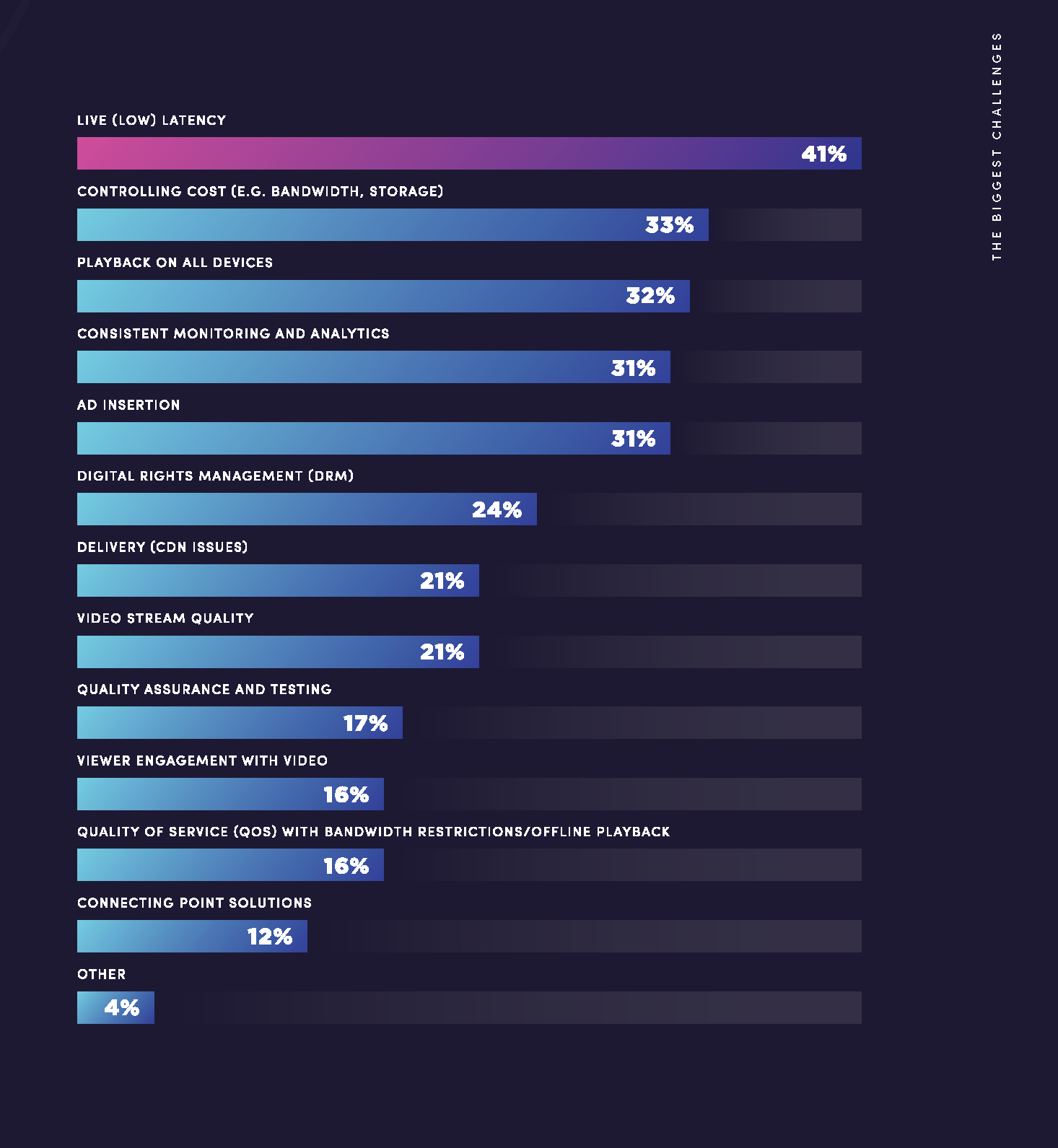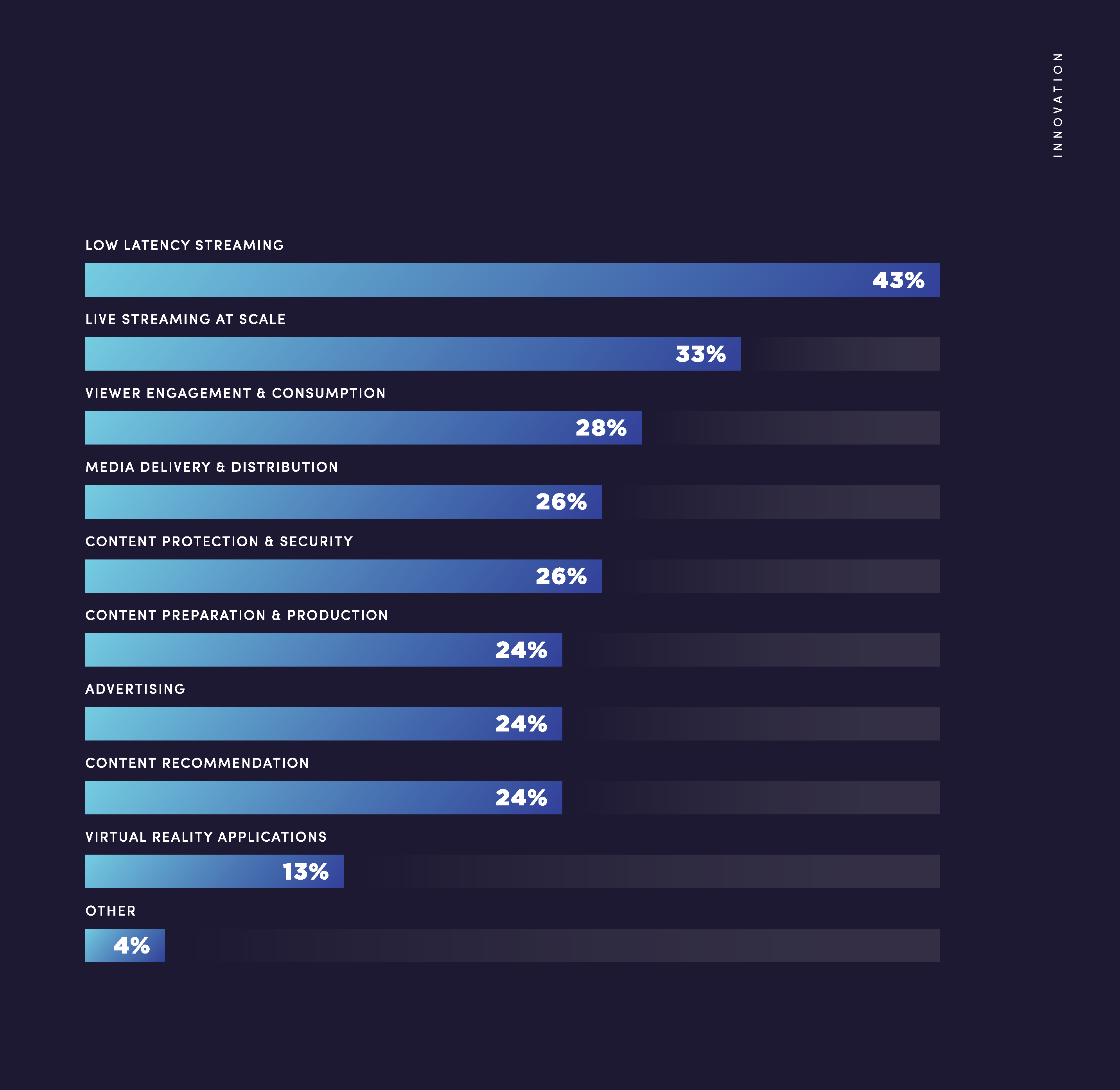
Stefan Lederer, CEO and co-founder of Bitmovin, which provides transcoding services for streaming video and audio, provided some very interesting information during the State of Streaming 2022 session at IABM’s BaM Live! Evolving Media Economics forum.
Lederer used his company’s annual video streaming industry survey, the “Video Developer Report 2021,” as the basis for his discussion of the current state of the industry and what to look forward to in 2022.
From the Survey: What Are the Biggest Challenges You Are Experiencing With Video Technology Today?

The COVID panic of 2020 knocked the video streaming industry for a loop, but, according to Lederer, it has recovered in 2021. It also ultimately increased the video and audio streaming audiences.
The number-one destination for video streaming is the internet browser. “You have to be in the browser,” Lederer said. However, he also noted that video streaming-capable devices are multiplying and that “It’s getting harder for the industry to cover all the devices.” Such streaming targets ranged from smartphones to smart TVs with gaming consoles and connected TVs growing their markets.
From the Survey: Which of the Following Platforms and Devices Do You Use to Stream Video or Audio Content?

The survey indicated that stream latency/buffering was the item at the top of concerns and interests for report respondees. Last year, cost control was top of the concerns. “I was actually surprised that [stream] buffering duration, buffering rate are at the top,” said Lederer. “I would have hoped for quality and video start up time metrics… I think that shows we are at the very beginning of analyzing what is [important].”
“One of the biggest problems we are seeing right now is audience retention. If you can provide a higher quality; if you can provide 4K; if you can provide HDR quality at bitrates that competitors can’t match, that’s a differentiation factor.”
— Stefan Lederer
When it came to codec choices, Lederer expressed some surprise at the resiliency of the AVC/H.264 video codec, now a decade old, as the most commonly used and a leading pick for continued use into 2022. The HEVC/H.265 codec was strong and looking stronger for 2022. AV1 had prospects for the next year with companies such as Netflix beginning to utilize it for some applications.
Lederer also examined monetization choices. Despite news and predictions of its imminent demise, SVOD (subscription) packages are still going strong while AVOD (advertising-supported) services have dropped slightly but are still a solid second. Any great reorientation in streaming business models is still a few years out, if one is to come.
CONNECTING WITH CONNECTED TV:
Currently one of the fastest-growing channels in advertising, Connected TV apps such as Roku, Amazon Fire Stick and Apple TV offer a highly effective way for brands to reach their target audience. Learn the basics and stay on top of the biggest trends in CTV with fresh insights hand-picked from the NAB Amplify archives:
- The Ever-Changing Scenery of the CTV Landscape
- TV is Not Dead. It’s Just Becoming Something Else.
- Converged TV Requires a Converged Ad Response
- Connected TV and the Consumer
- Connected TV Opens Up a Million Ad Possibilities
Lederer commented on the proliferation of video stream content outlets and the intense competition that has engendered. “One of the biggest problems we are seeing right now is [audience] retention. If you can provide a higher quality; if you can provide 4K; if you can provide HDR quality at bitrates that competitors can’t [match], that’s a differentiation factor.”
From the Survey: Where Do You See the Most Opportunity for Innovation in Your Service?

The “Video Developer Report 2021” contains more insights such as new video encoding features, digital rights management choices, advertising streaming and insertion, analytics and data providers, and streaming service maintenance concerns.
Head over to Bitmovin to read the full report. Sessions are also available on demand at BaMZone powered by IABM.


